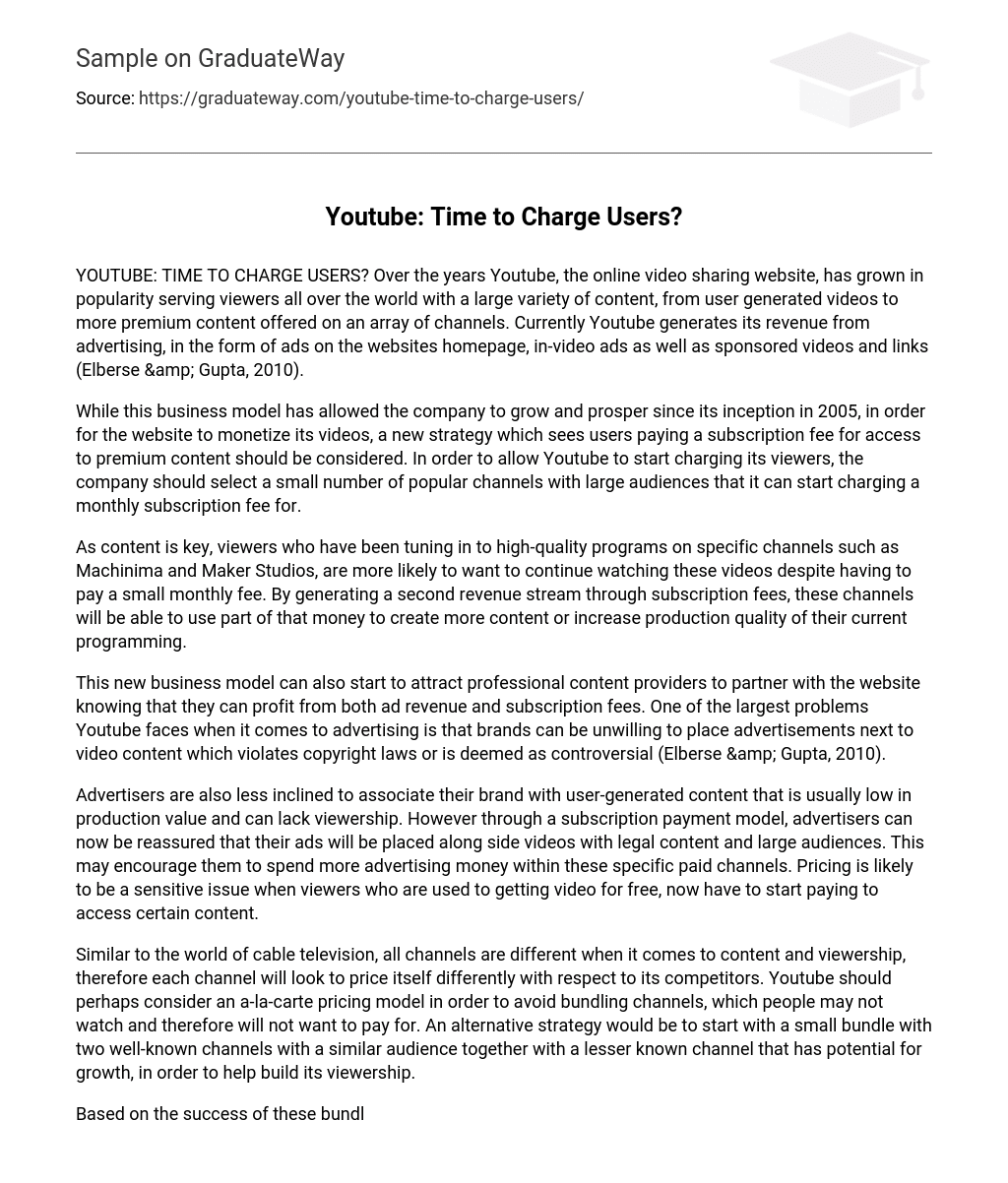Over the years Youtube, the online video sharing website, has grown in popularity serving viewers all over the world with a large variety of content, from user generated videos to more premium content offered on an array of channels. Currently Youtube generates its revenue from advertising, in the form of ads on the websites homepage, in-video ads as well as sponsored videos and links (Elberse & Gupta, 2010).
While this business model has allowed the company to grow and prosper since its inception in 2005, in order for the website to monetize its videos, a new strategy which sees users paying a subscription fee for access to premium content should be considered. In order to allow Youtube to start charging its viewers, the company should select a small number of popular channels with large audiences that it can start charging a monthly subscription fee for.
As content is key, viewers who have been tuning in to high-quality programs on specific channels such as Machinima and Maker Studios, are more likely to want to continue watching these videos despite having to pay a small monthly fee. By generating a second revenue stream through subscription fees, these channels will be able to use part of that money to create more content or increase production quality of their current programming.
This new business model can also start to attract professional content providers to partner with the website knowing that they can profit from both ad revenue and subscription fees. One of the largest problems Youtube faces when it comes to advertising is that brands can be unwilling to place advertisements next to video content which violates copyright laws or is deemed as controversial (Elberse & Gupta, 2010).
Advertisers are also less inclined to associate their brand with user-generated content that is usually low in production value and can lack viewership. However through a subscription payment model, advertisers can now be reassured that their ads will be placed along side videos with legal content and large audiences. This may encourage them to spend more advertising money within these specific paid channels. Pricing is likely to be a sensitive issue when viewers who are used to getting video for free, now have to start paying to access certain content.
Similar to the world of cable television, all channels are different when it comes to content and viewership, therefore each channel will look to price itself differently with respect to its competitors. Youtube should perhaps consider an a-la-carte pricing model in order to avoid bundling channels, which people may not watch and therefore will not want to pay for. An alternative strategy would be to start with a small bundle with two well-known channels with a similar audience together with a lesser known channel that has potential for growth, in order to help build its viewership.
Based on the success of these bundles, they could then consider slowly adding in more channels. Channel bundling has become a topic of controversy in the cable television, as prices continue to skyrocket with more and more channels being added, hence Youtube should learn from this and formulate a payment plan that will satisfy the majority of its customers and help to limit the number of viewers it may lose due to this new payment structure.
While there are other alternative ways for Youtube to monetize, by charging users for uploading videos or continuing to solely rely on advertisers, a subscription based business model is more likely to earn higher revenues for both the company as well as its content creators with a dual revenue stream. This strategy also puts Youtube in a position to compete against established video subscription streaming sites such as Hulu, Netflix and Amazon Prime, who are now starting to invest more in original content.
References
- Elberse, A. & Gupta, S. (2010) Youtube: Time to Charge Users? [Case Study] Boston: Harvard Business Publishing.





